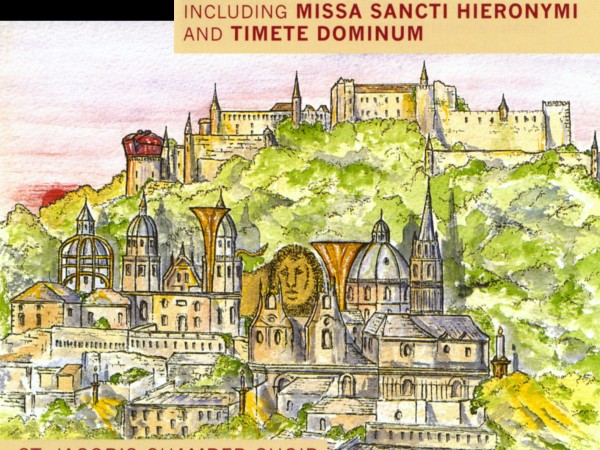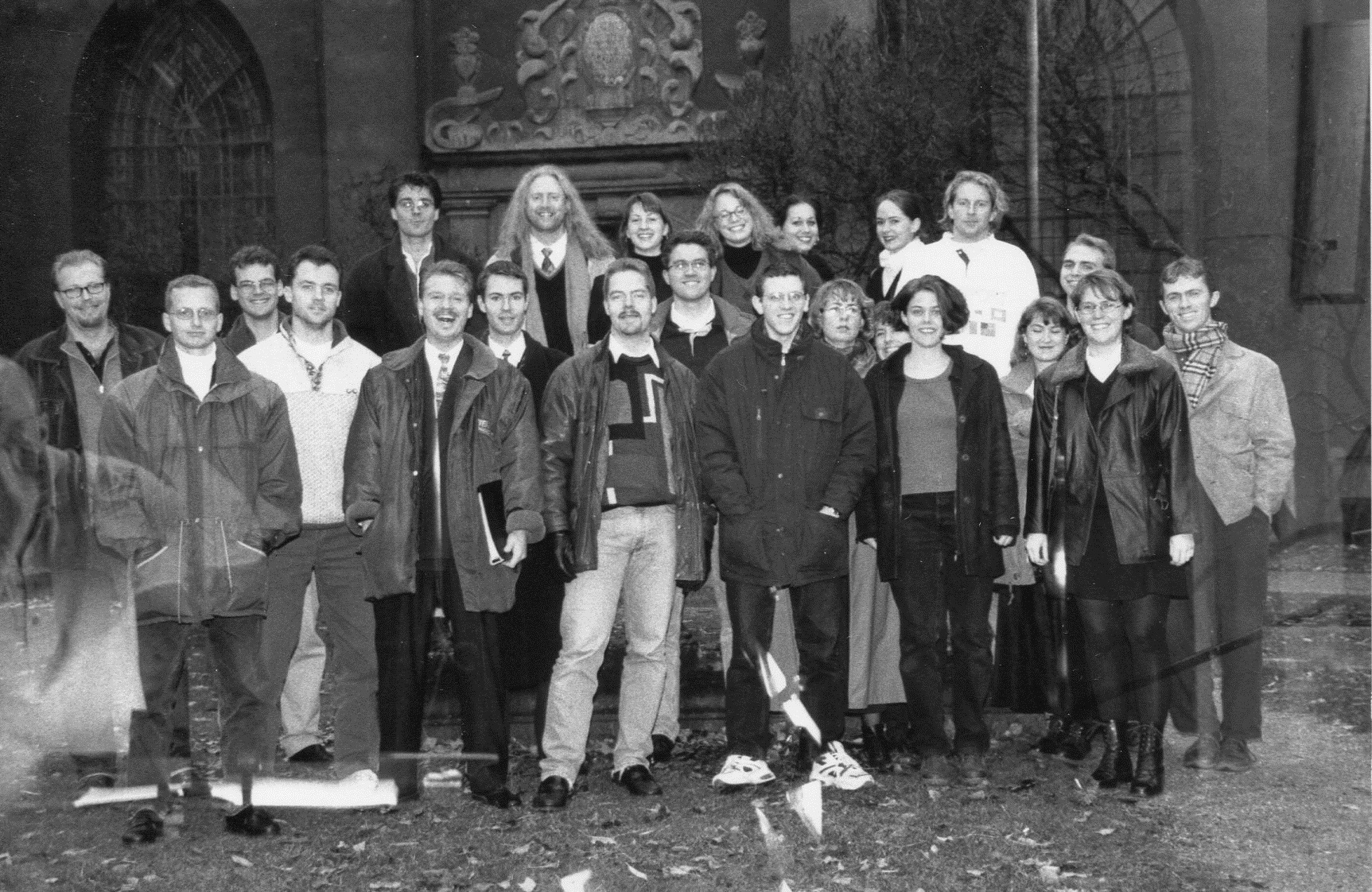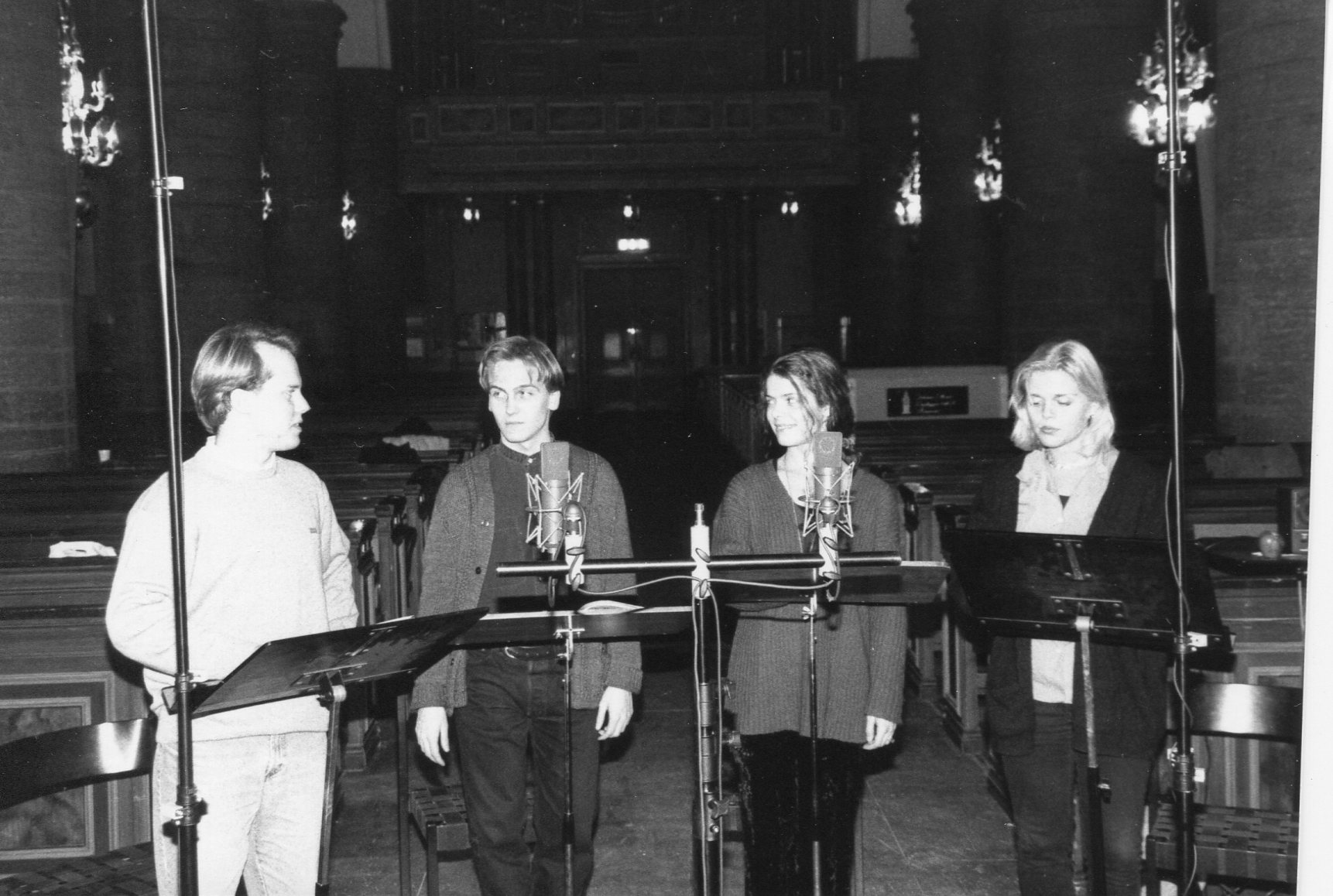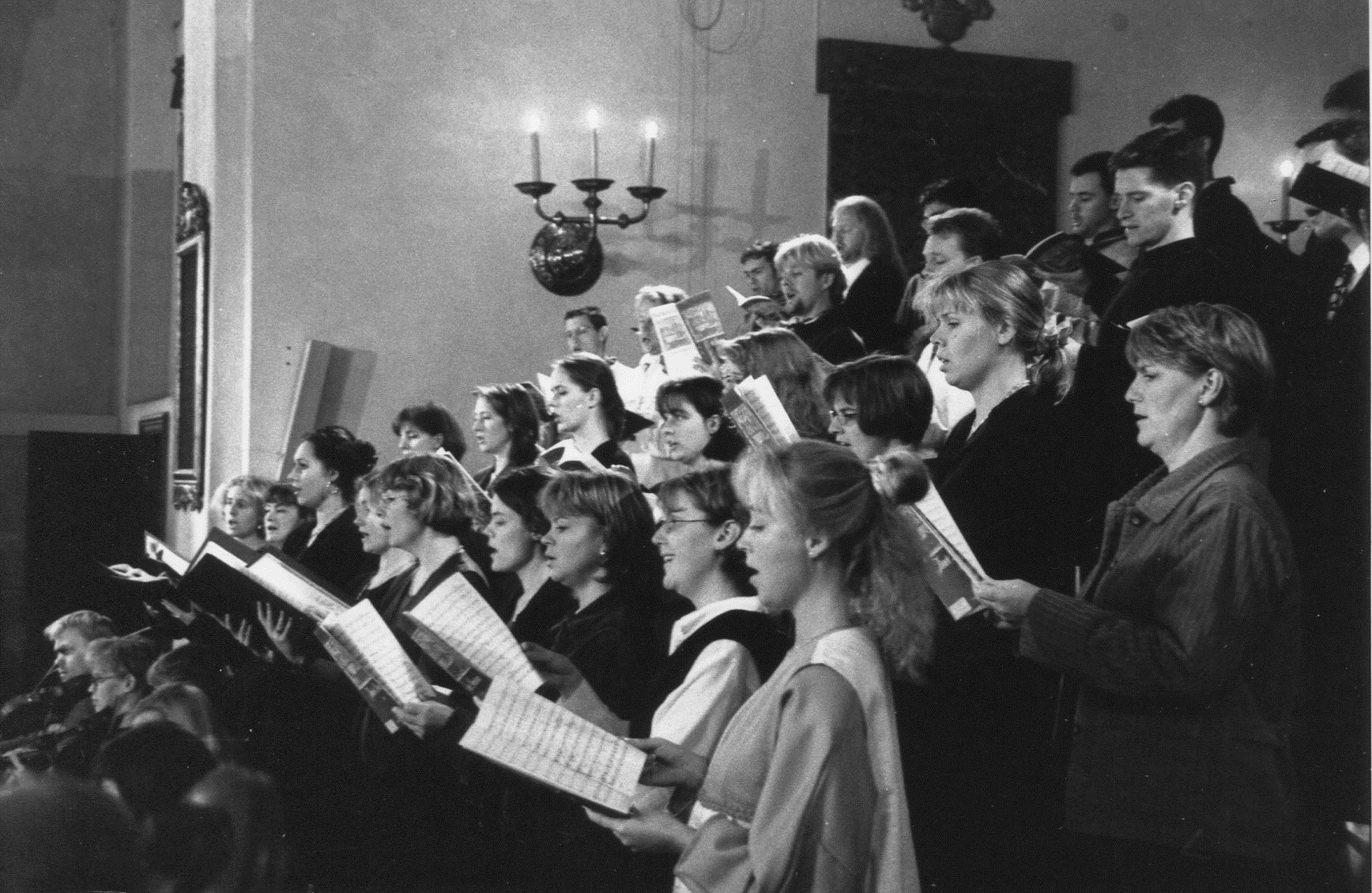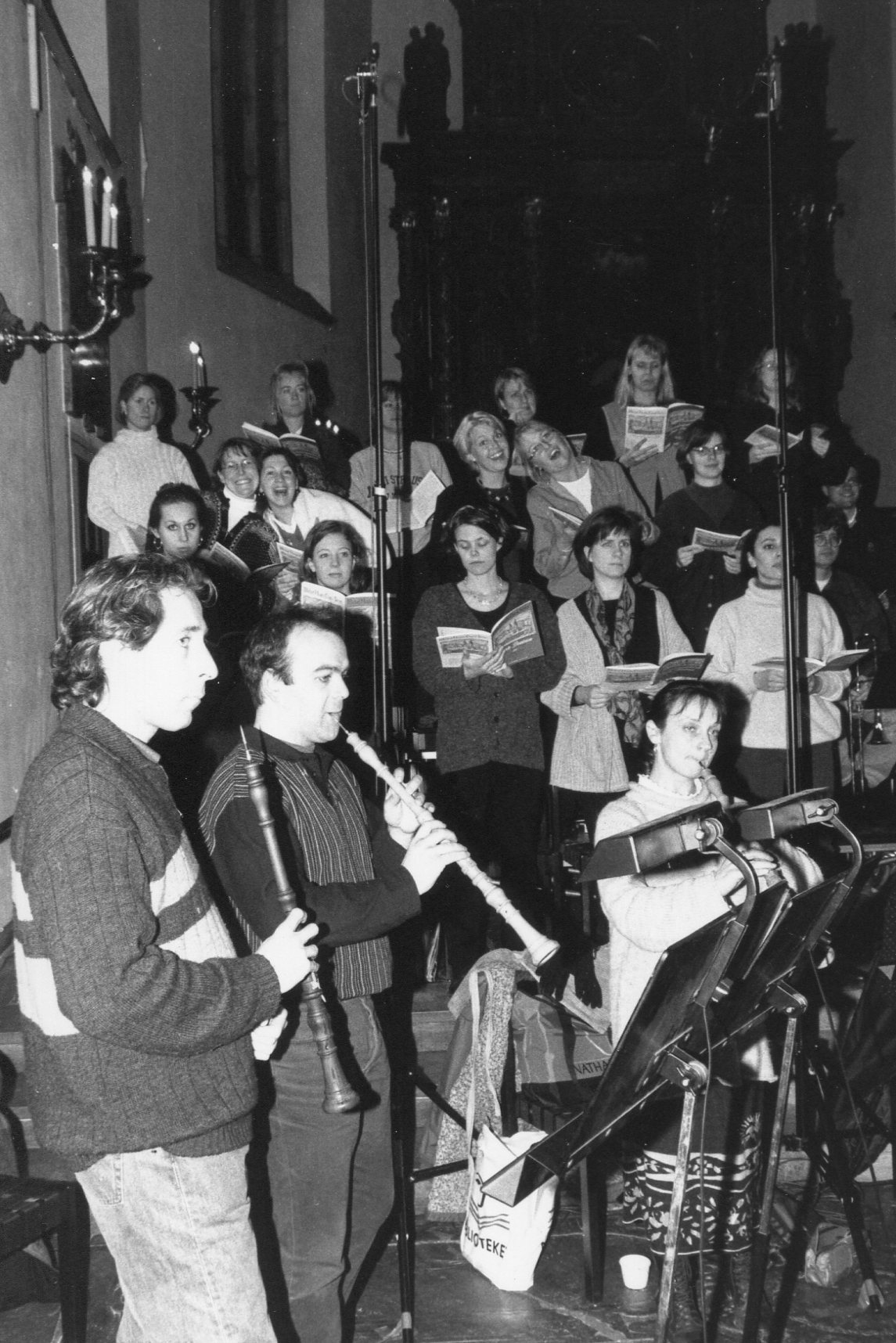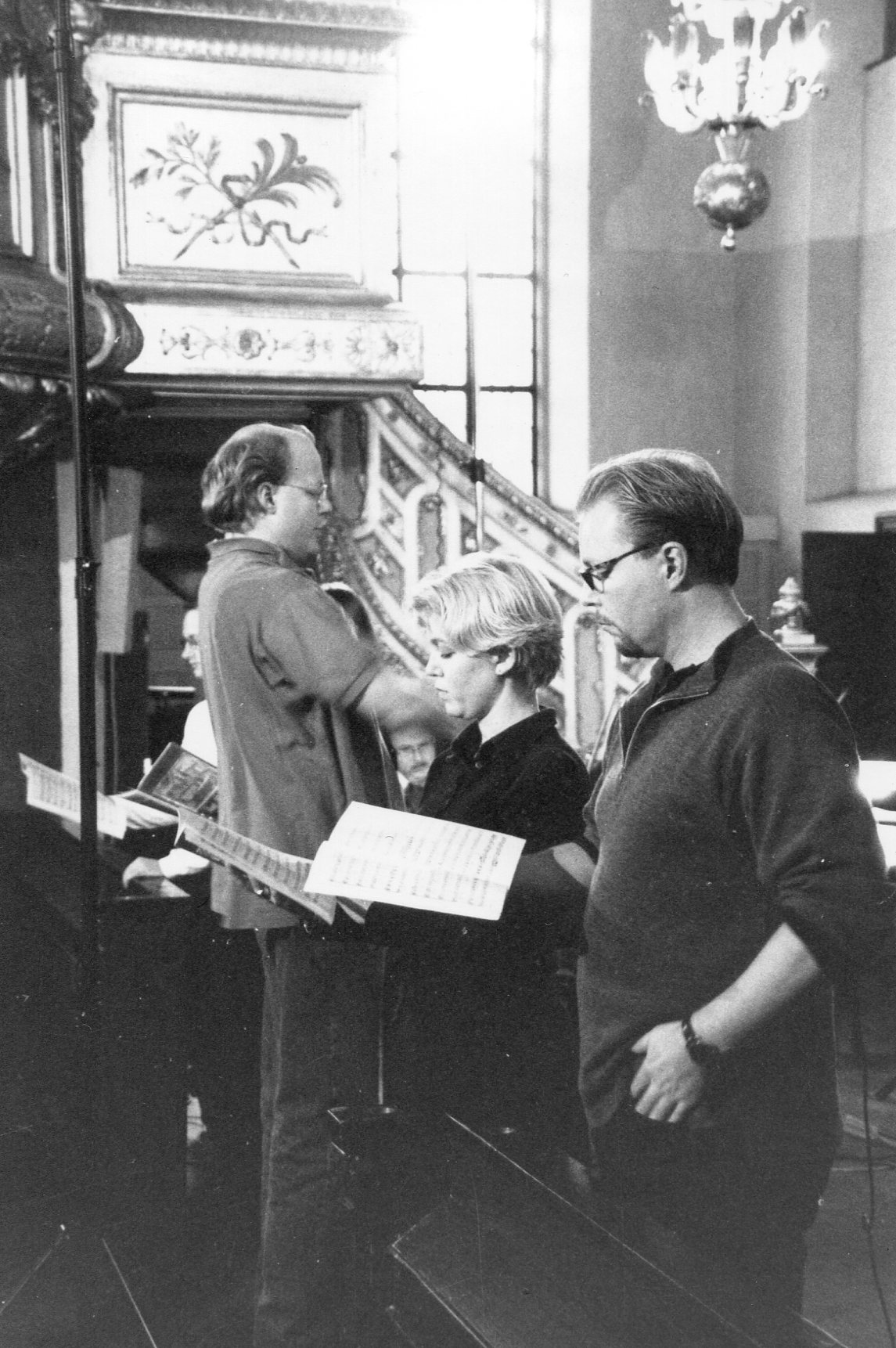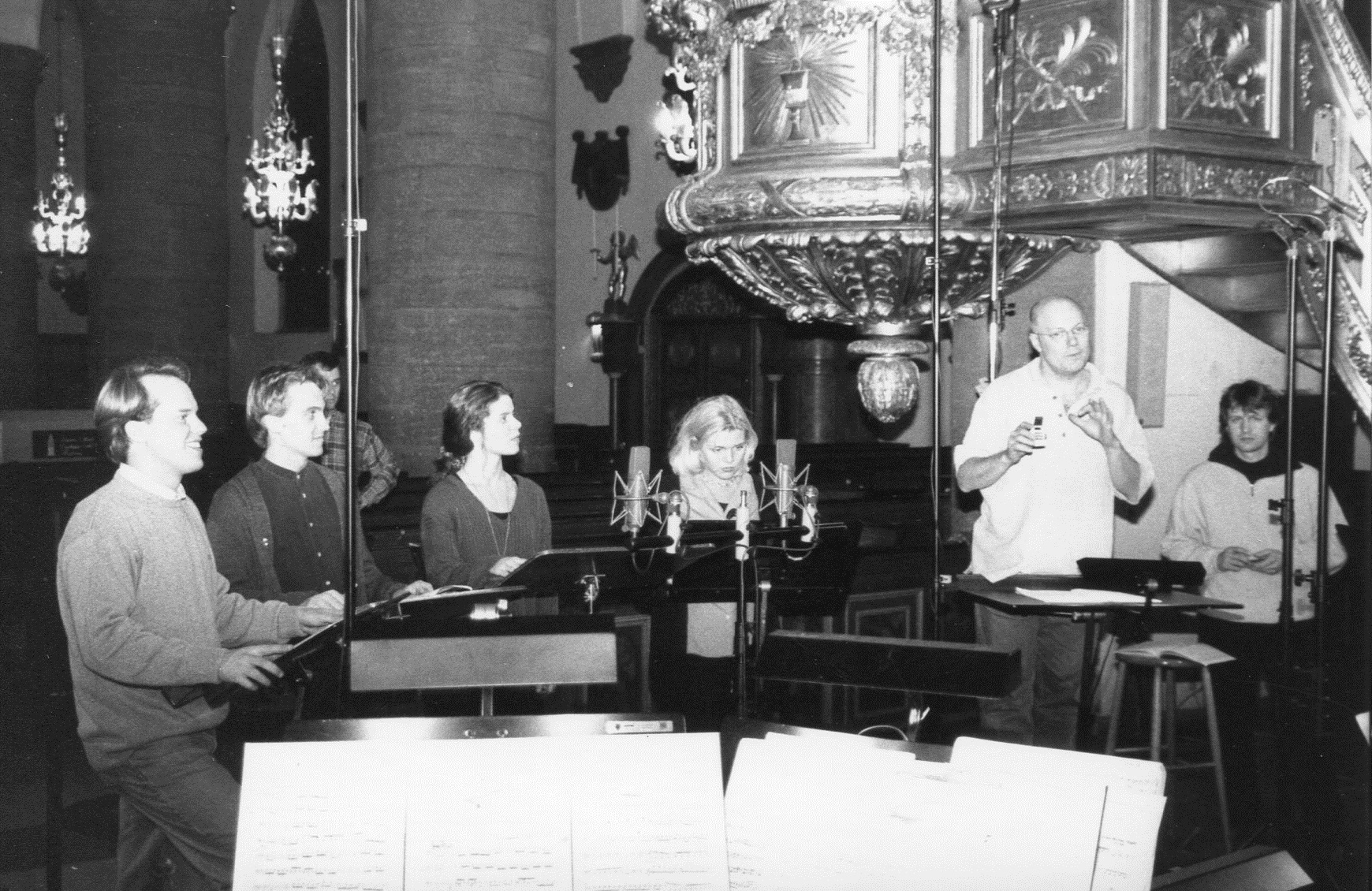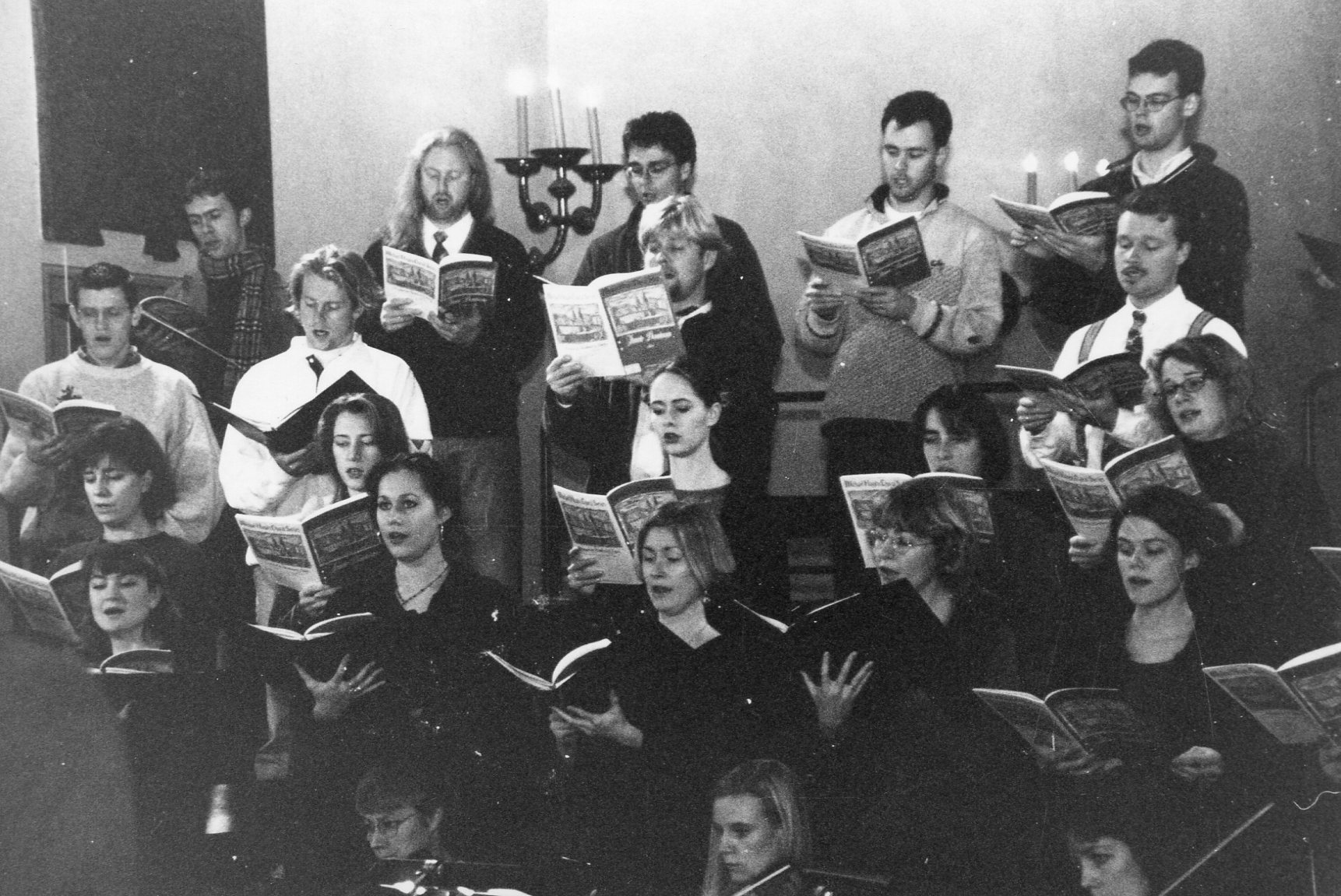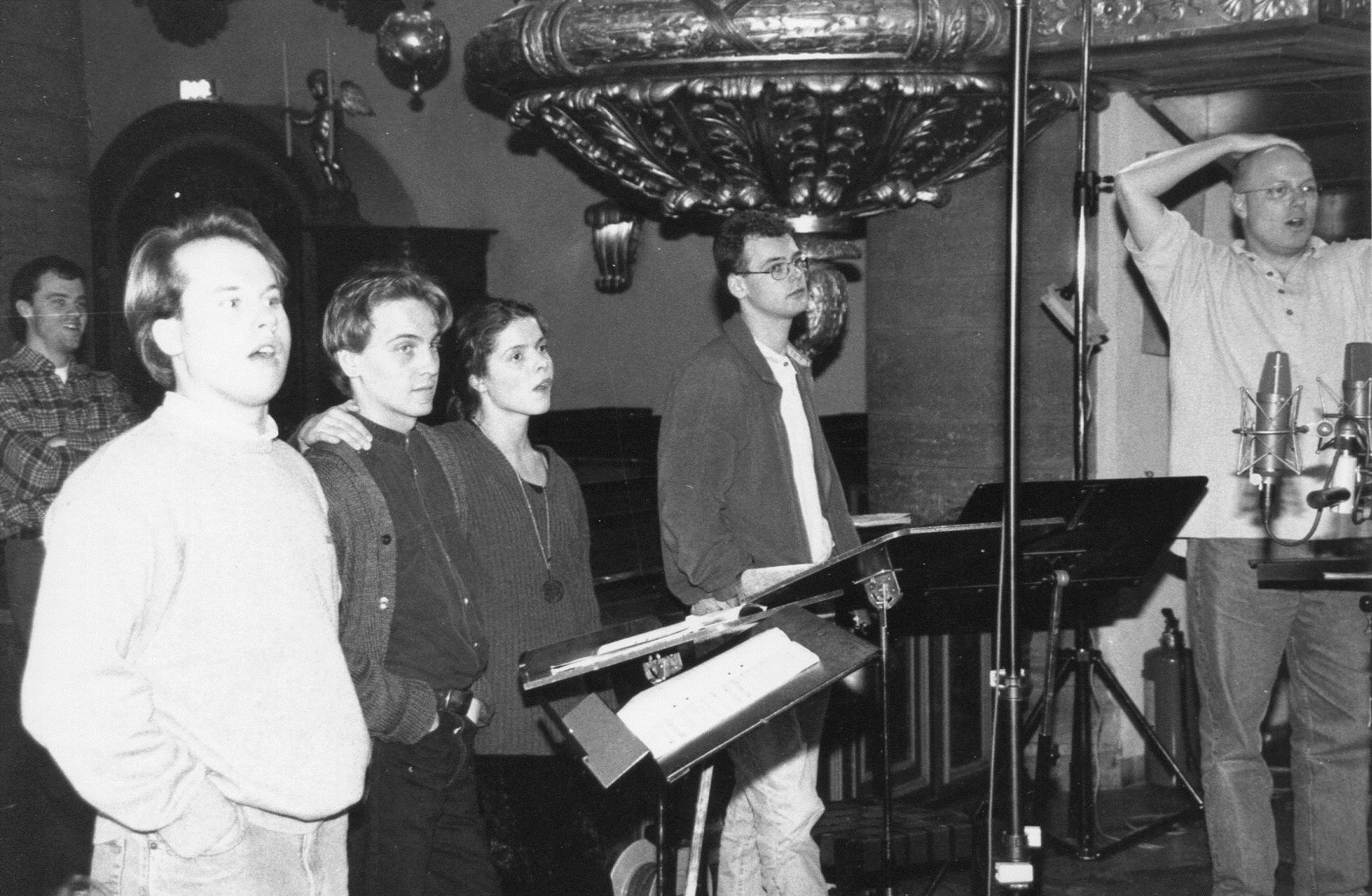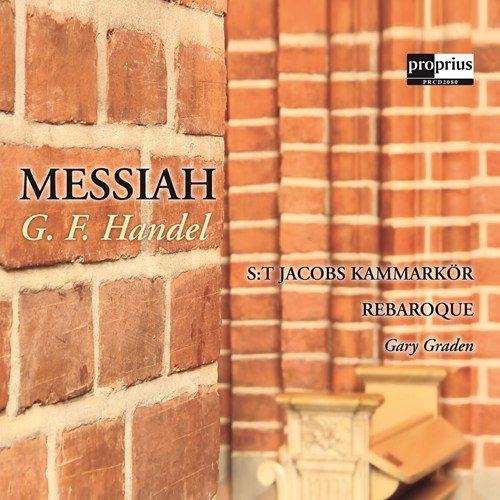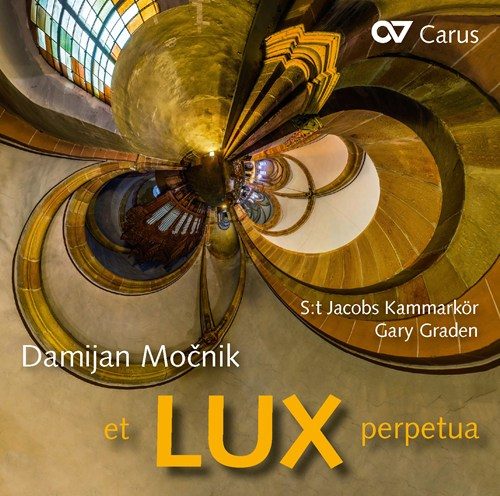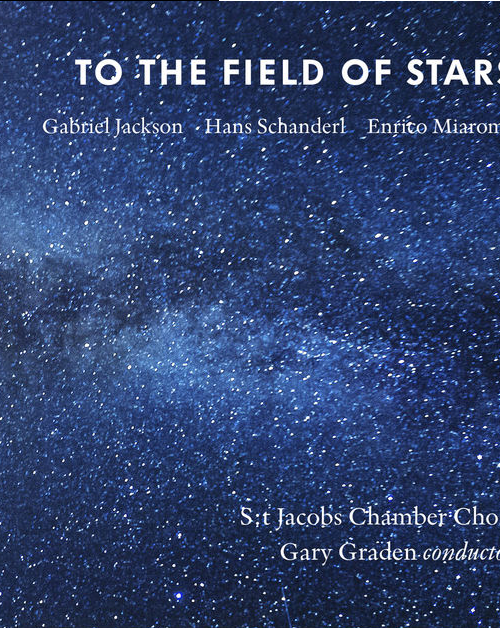single album
Michael Haydn, Sacred Choral Music, Missa sancti Hieronymi och Timete Dominum
Booklet (click here)
Reviews, see below
About this CD
S:t Jacobs Kammarkör
Ensemble Philidor, France
Miah Persson, soprano
Katija Dragojevic, alto
Fredrik Strid, tenor
Lars Johansson, bass
Conductor- Gary Graden
Recorded in St. Jacobs church April 1997
BIS-CD-859 (1998)
Photos from the recording session by Staffan Engwall
 Early Music Review no.6-1998
Early Music Review no.6-1998
“This is a wonderful CD…”
Haydn Sacred Choral Music
St. Jacob’s Chamber Choir, Ensemble Philidor.
Gary Graden cond
60’00”
BIS-CD-859
This is a wonderful CD and will appeal to anyone who likes the church music of this period: it’s full of glorious tunes and shortlived contrapuntal episodes (not because Haydn was incapable of writing longer sections – the hymns reveal him to be an accomplished follower of Fux). These bright, crystal-dear recordings by the wonderfullyreedy Ensemble Philidor, a light, sharplyfocussed choir, and a quartet of unfamiliar but certainly gifted soloists once more stake a claim for Haydn’s church music: why do we hear so little of it? This is the first CD I’ve heard of since Richard Marlow’s recording on Conifer in 1993. And. while I’m on the subject, will some band of this stature please record some Vanhal!?
 Fanfare Magazine Issue 21:6 (July/Aug 1998)
Fanfare Magazine Issue 21:6 (July/Aug 1998)
“This is highly recommended”
Michael Haydn (1737-1806), the younger brother of Franz Josef, composed at Salzburg from 1763 until his death, so it’s not surprising that his Masses sound a lot like the earlier Masses of Mozart and his own brother. In the past we have had Masses dedicated to St. Ursula, St. Aloysius, and St. Leopold, and this one was also recorded before during Andrew C. Minor’s productive time at the University of Missouri. It’s a particularly cheerful romp as performed here, shaving six minutes off the time of Minor’s recording, but the oboes and trombones that the composer used so prominently also have something to do with that. Described here (along with the motet that follows it on the disc) as “two of [his] most important sacred compositions,” they were first performed on November 1, 1777, at the cathedral. This was the first Mass Haydn had written at Salzburg since the Requiem for Archbishop Colloredo’s predecessor in 1771. The dedication to St. Jerome, not a popular devotion in Salzburg then or now, undoubtedly reflected the fact that this was Colloredo’s baptismal name.
Minor’s performance sounded very fine when it was new, but the singing of the Stockholm church choir is even finer. The sound is also captured far more clearly, due to better mike placement as much as to improved technology. The MH numbers on each piece are taken from the Sherman-Thomas catalog published in 1993, the first complete chronological catalog of the composer’s works. It’s not clear why the first two works have no numbers, for this is the Charles Sherman who wrote the notes and prepared the edition for Minor’s recording, which coincided with the first performance of this Mass in modern times (1967). Sherman found occasion to refer in his notes to Orazio Benevoli as the composer of a 53-part Mass for Salzburg, a theory that had not been debunked at that time, but there is no reason for Per Skans, the annotator of this disc, to make the same mistake. This is highly recommended.
J. F. Weber
 BBC Music Magazine 7-1998BC
BBC Music Magazine 7-1998BC
“…attractive disc…”
“SOUND * * * * *”
MICHAEL HAYDN
Missa Sancti Hieronymi; Timete Dominum; Ave regina caelorum; Christus factus est, etc
Vocal and instrumental soloists; St Jacob’s Chamber Choir, Ensemble Philidor/Gary Graden, Eric Baude-Delhommais
BIS CD-859 60:00 mins
PERFORMANCE * * * *
SOUND * * * * *
Just as Louis XIV had fostered a climate at Versailles that was sympathetic to the arts, so too did the Habsburgs deem fine architecture, painting and music appropriate reflections of dynastic splendour.
Fux and Caldara prepared the musical ground in Vienna, and it was some of the works of these composers on which musicians of the next generation, as choristers in St Stephen’s Cathedral, cut their teeth. Michael Haydn was one of them, though most of his adult life was spent in Salzburg where he quickly became court Konzertmeister. The principal work on this attractive disc of sacred vocal pieces is the Missa Sancti Hieronymi which Haydn performed in Salzburg Cathedral in 1777. On that occasion it impressed, among others, Leopold Mozart. It is a richly scored piece with parts for oboes, bassoons, trombones and organ without the customary strings. Also included in this spirited performance is the offertory Timete Dominum, similarly scored and which, judging by Leopold’s report, was sung at the same service. ‘World Premiere Recording’ is claimed for this piece and two others in the programme. Solo vocalists and choir are very good indeed and so, too, are the wind players, who carry a heavy responsibility in the Mass and offertory. Only occasionally did I sense the oboe playing to be a shade under pitch.
NICHOLAS ANDERSON
 American Record Guide July/aug 1998
American Record Guide July/aug 1998
 Répertoire 9-1998
Répertoire 9-1998
Michael HAYDN (1737-1806)
Choeur de chambre de Saint Jacob, Miah Persson (soprano), Katija Dragojevic (alto), Fredrik Strid (ténor), Lars Johansson (basse), Ensemble Philidor, dir. Eric Baude-Delhommais, Gary Graden.
BIS CD-859 (Dante). 1997.
NOUVEAUTÉ 1re 60′
Stéréo DDD * * *
Notice * * *
Le disque nous a déjà révélé quelques messes et pièces du frère cadet de Joseph, tirées de l’abondante production religieuse de celui qui fut à Salzbourg un maître de chapelle et un musicien de cour apprécié. Ce nouveau disque vient confirmer avec bonheur la dimension spirituelle et l’inspiration de Michael Haydn. S’il s’efforça de satisfaire le prince archevêque Hieronymus Colleredo en suivant dans sa composition les préceptes de la musique d’église en vigueur, cette messe frappe néanmoins par sa fraîcheur et sa spontanéité. En outre, les deux hautbois solistes et les bassons, très présents, lui donnent une couleur particulière. De bien jolies pages se succèdent, de l’ardeur simple du Credo à l’ambiance pastorale du Benedictus. Les passages brillants le sont sans excès. Cette ferveur sans apprêt et cette alliance de simplicité et de charme sont rendues avec chaleur mais aussi avec sobriété par les interprètes, tous impeccables. Un réalisation vocale et instrumentale de qualité au service d’une page attachante, judicieusement complétée.
JEAN-PASCAL HANSS
 Klassik heute 10 – 1998
Klassik heute 10 – 1998
M. Haydn: Geistliche Chormusik
Missa Sancti Hieronymi, Timete Dominum u.a.
St. Jacob’s Chamber Choir, Gary Graden, Ensemble Philidor, Eric Baude-Delhommais.
BIS 859 (60′ – 1997)
Der jüngere Bruder des berühmten Joseph Haydn war als Hofmusiker, Konzertmeister und Domorganist in Salzburg längst ein Star, vor Leopold und Wolfgang Amadeus Mozart. Seine Missa Sancti Hieronymi, wegen ihrer Besetzung mit 6 Oboen auch Oboenmesse genannt, und die Einlage dazu, das Timete Dominum, wurden 1777 im Salzburger Dom uraufgeführt. Die anderen Stücke der CD reichen von Frühwerken (Christus factus est MH 38 von 1761 und der doppelchörigen Motette Ave Regina Caelorum MH 140, 1770) über ein Veni Sancte Spiritus (MH 161, 1770-72) bis zum späten Sanctl Dei (MH 328) von 1782. Hiervon sind übrigens drei Stücke Erstaufnahmen (Timete Dominum MH 38 und 161). Die Spannweite wird von dem schwedischen Chor, der in Stockholm beheimatet ist, perfekt gemeistert. In der Missa versteht er sich – zusammen mit dem dezent aber konturenreich spielenden Ensemble Philidor – auf Klangfülle und Verve. In den a cappella-Sätzen besticht die herbe, weitgespannte Diktion großer nordischer Chorkultur à la Eric Ericson.
KLAUS P. RICHTER
 enchanting church music
enchanting church music
Top Customer ReviewsListener review amazon
By Charles A on September 12, 2013
Format: Audio CD Verified Purchase
(its fugal “Alleluia” much admired by Mozart the elder) make an excellent introduction to the work of Josef Haydn’s talented younger brother. The performances are top-notch and the audio balance is excellent, solosts, chorus and orchestra each well-defined with none obscuring any other. A pleasure to listen to.
